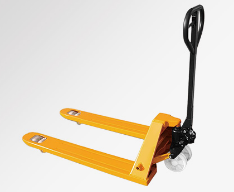News Details
The structural design of manual hydraulic transport vehicles
Manual transport vehicles can easily move goods through manual operation and are used in wholesale markets, logistics warehouses, supermarkets, and other places. What components are assembled into such a high-quality moving tool?
A manual hydraulic transport vehicle is a small, convenient, flexible, heavy, and durable cargo handling tool, commonly known as a "ground cow". In addition to the function of transporting goods, the transport vehicle is equipped with a hydraulic device between the chassis and wheels for the convenience of taking off and landing goods. The vehicle can be easily pushed under the base of the cargo box, and then the chassis can be raised by hydraulic pressure to lift the goods. The goods can be dragged to move, and after reaching the destination, the chassis can be lowered by hydraulic pressure, and the goods can also land, making it convenient to withdraw the transport vehicle.

The main structural features of a manual hydraulic transport vehicle are:
1. Helm handle. After opening the tiller, the hydraulic system can produce pressure; After release, the pressure of the hydraulic system also disappears.
2. Handle. Shake the handle up and down to lift the fork. Direction control can be achieved by connecting the steering wheel with the handle.
3. Hydraulic lifting system. A sturdy lifting system that can meet most lifting requirements and is galvanized according to standard requirements.
4. Fork. The fork is made of high tensile resistant channel steel.
Wheels. The small wheel at the fork end is a load-bearing roller, and the large wheel connected to the handle is a steering wheel used to control direction.

